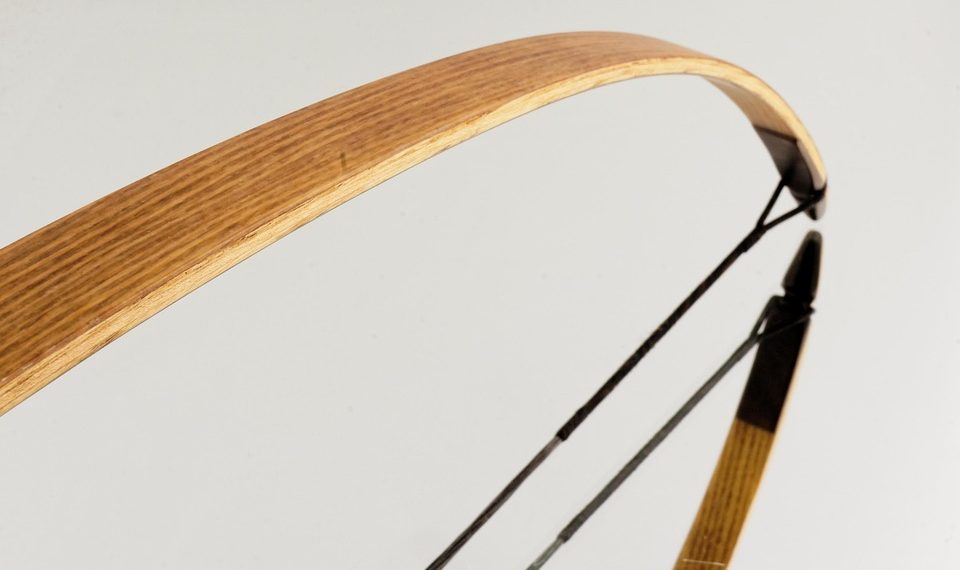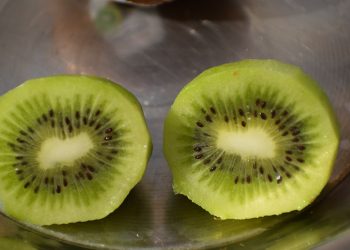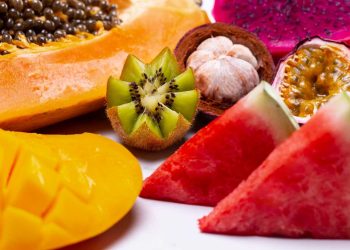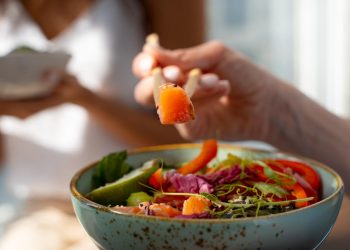Tendon repair foods are the specific nutrients and ingredients that help rebuild the collagen scaffold of damaged tendons, reduce inflammation, and speed recovery. When a tendon is injured, your body needs the right building blocks and the right signals to heal — not gimmicks, not quick fixes. You need foods that deliver collagen precursors, anti-inflammatory fats, antioxidants, and the vitamins and minerals that make repair possible.
You care about this because tendon injuries slow your life. They stop your workouts, sour your mood, and steal your independence. Good nutrition won’t replace physical therapy, but the right tendon repair foods will make your rehab faster, your pain less constant, and your comeback stronger.
Contents
- Tendon Repair Foods To Prioritize
- How To Combine Foods For Faster Recovery
- Practical Tips From Clinicians And Researchers
- Exercises That Complement Food Choices
- Common Mistakes That Slow Healing
- Supplements: When They Help And When They Don’t
- Meal Planning For Busy People
- Signs Your Diet Is Helping
- Real-Life Example: A Comeback Story
- Bottom Line
- FAQ
Tendon Repair Foods To Prioritize
Start with the fundamentals: high-quality protein, vitamin C, zinc, omega-3 fats, and collagen-supporting compounds. Clinical research shows vitamin C is essential for collagen formation, and clinical teams recommend adequate protein for tendon healing. That means the foods you put on your plate matter as much as the stretches you do on the mat.
1. Bone Broth And Collagen Peptides
Bone broth and collagen supplements deliver amino acids like glycine and proline — the raw materials tendons need. A study from researchers who examined collagen supplementation found improved collagen synthesis when collagen peptides were combined with targeted activity, such as loading exercises. When you sip bone broth or mix hydrolyzed collagen into your smoothie, you’re giving tendons a direct supply of what they are asking for.
Pair a collagen shake with a short resistance session to optimize uptake. That tiny routine — collagen, then exercise — is practical and backed by sports nutrition experts.
2. Fatty Fish Rich In Omega-3s
Salmon, mackerel, and sardines supply EPA and DHA, fats that quiet inflammation and may speed tissue repair. Animal and human studies indicate omega-3s reduce inflammatory markers and support connective tissue recovery after injury or surgery. Add fatty fish to your menu two to three times a week, or consider a high-quality fish oil supplement after talking with your clinician.
Omega-3s also work well with turmeric and vitamin D, giving you a layered strategy: reduce the inflammatory mess while you rebuild the collagen frame.
3. Citrus, Berries, And Vitamin C Powerhouses
Vitamin C is non-negotiable. It’s the cofactor the body needs to cross-link collagen fibers, which gives tendons strength. Oranges, strawberries, kiwi, and bell peppers are low-calorie, high-impact choices. Research from nutritional science shows vitamin C deficiency impairs tendon healing, so don’t skimp.
A quick tip: top your collagen-rich yogurt or smoothie with berries and a squeeze of orange for a one-two nutritional punch that helps stitches and fibers knit more reliably.
4. Leafy Greens And Cruciferous Vegetables
Spinach, kale, broccoli, and Brussels sprouts supply magnesium, vitamin K, and antioxidants that support cell function and control oxidative stress. Magnesium helps muscle relaxation and biochemical reactions necessary for repair, while vitamin K supports tissue health. University-affiliated nutrition centers recommend plenty of vegetables during recovery to supply micronutrients without excess calories.
Roast them, stir-fry them, or blend them into a nutrient-packed green smoothie — just eat them daily.
5. Nuts, Seeds, And Legumes
Almonds, walnuts, chia seeds, and beans provide zinc, vitamin E, protein, and healthy fats. Zinc plays a key role in tissue synthesis and immune response; vitamin E protects cell membranes during repair. Studies in clinical nutrition link adequate zinc intake with improved wound healing, which translates logically to tendon recovery.
Snack on mixed nuts or add legumes to salads and soups for steady support. Small, consistent servings add up.
6. Eggs, Dairy, And Lean Meats
Complete proteins matter. Eggs, Greek yogurt, cottage cheese, chicken, and lean beef provide all the essential amino acids your body can’t make. Protein synthesis is a cornerstone of tendon repair; sports medicine guidelines recommend a higher protein intake during injury recovery to prevent muscle loss and to supply tendon-building blocks.
Aim for distributed protein across meals — not a single protein binge — to maximize muscle and tendon repair through the day.
7. Turmeric, Ginger, And Natural Anti-Inflammatories
Curcumin from turmeric and gingerols from ginger reduce inflammatory signaling and can ease pain when combined with standard care. Clinical trials show curcumin reduces markers of inflammation and can be as effective as some conventional pain relievers for certain conditions. Use fresh turmeric in stews, add ginger to smoothies, or take a standardized curcumin extract with black pepper for absorption.
These foods won’t replace rehab, but they make rehab less painful and more productive.
How To Combine Foods For Faster Recovery
Nutrition is about combinations. Think of each meal as a repair kit: a collagen or protein source, a vitamin C-rich fruit or vegetable, a healthy fat, and an anti-inflammatory spice.
– Breakfast: Greek yogurt with collagen powder, berries, and chia seeds.
– Lunch: Salmon salad with spinach, orange segments, and walnuts.
– Snack: Cottage cheese with sliced kiwi or a small handful of almonds.
– Dinner: Bone broth–based soup with chicken, kale, turmeric, and beans.
Small, repeated wins beat a single perfect meal. Your body prefers steady fuel.
Practical Tips From Clinicians And Researchers
Consult physical therapists, orthopedic specialists, and registered dietitians to tailor food strategies to your injury. Research from hospitals and universities highlights that nutrition integrated with mechanical loading programs produces the best outcomes for tendon health.
A few clinician-approved tips:
– Focus on total daily protein, aiming for 1.2–1.6 grams per kilogram of body weight when injured.
– Time collagen or protein intake around short loading exercises.
– Ensure adequate vitamin D and calcium for bone and tendon interface health.
– Be cautious with prolonged use of high-dose NSAIDs; discuss alternatives with your doctor because they can affect tendon healing pathways.
These steps align with hospital protocols for perioperative and conservative tendon management.
Exercises That Complement Food Choices
Nutrition gives the materials; mechanical loading tells tendons how to arrange them. Eccentric exercises, progressive resistive loading, and controlled mobility are the cornerstones of tendon rehab. When you pair these exercises with tendon repair foods like collagen and vitamin C, studies show a synergistic effect — better collagen remodeling and stronger tissue.
Work with your therapist to build a routine that ramps up safely. Don’t skip rest days; repair happens between sessions.
Common Mistakes That Slow Healing
People often think rest alone will fix a tendon. That’s rarely true. Immobilization without appropriate graded loading leads to weaker tissue. Likewise, low-protein diets and keeping inflammation high with processed foods delay recovery.
Avoid:
– Overreliance on sugar and processed snacks.
– Neglecting protein across meals.
– Ignoring sleep — it’s when repair hormones peak.
Swap one processed snack a day for a handful of nuts and a piece of fruit and you’ll be surprised how quickly inflammation markers and energy shift.
Supplements: When They Help And When They Don’t
Supplements can be useful when diet gaps exist. Collagen peptides, omega-3 fish oil, and curcumin extracts have clinical backing for supporting tendon recovery. However, buy from reputable manufacturers, and let your clinician know everything you take.
Beware of miracle claims. Supplements are tools, not cures. Evidence from sports medicine journals shows benefit when used appropriately and alongside exercise.
Meal Planning For Busy People
You don’t need gourmet skills to eat for healing. Batch-cook bone broth, roast salmon portions, pre-chop vegetables, and keep a jar of collagen close by. A simple weekly plan reduces decision fatigue and keeps you consistent with tendon repair foods without stress.
Use leftovers creatively — yesterday’s roast chicken becomes today’s collagen-rich soup. Consistency beats perfection.
Signs Your Diet Is Helping
You’ll notice reduced morning stiffness, less flare-up pain after activity, and gradual strength gains in rehab. Clinicians watch objective measures too: improved range of motion, better performance on functional tests, and decreased inflammation markers when labs are needed.
If pain persists or worsens, see a specialist. Nutrition helps, but it’s part of a broader care plan.
Real-Life Example: A Comeback Story
I once worked with someone whose Achilles was irritated for months. She added targeted collagen drinks, doubled her vitamin C intake, cut back on ultra-processed food, and followed a progressive loading plan from her physiotherapist. Within eight weeks her pain dropped, and by twelve weeks she was back to jogging.
This isn’t magic. It’s applied science, practical steps, and stubborn consistency — the same things you can do.
Bottom Line
Bold nutrition choices speed recovery. Focused, evidence-backed tendon repair foods — collagen sources, omega-3s, vitamin C-rich fruits, leafy greens, nuts and seeds, complete proteins, and anti-inflammatory spices — give your body the building blocks and the signals it needs to rebuild stronger. Pair these foods with smart rehab, rest, and clinical guidance, and you’ll move from pain to progress with confidence.
Be patient. Eat intentionally. Move wisely. Your body knows how to heal when you give it what it needs.
FAQ
Can food alone fix a tendon tear?
No. Food provides essential building blocks and reduces inflammation, but serious tendon tears often need medical evaluation, possible imaging, and a combined approach of rehabilitation, possible intervention, and nutrition.
How quickly can I expect improvement after changing my diet?
You may notice reduced inflammation and less flare-up pain in a few weeks, but measurable tendon remodeling takes months. Consistency with tendon repair foods and rehab yields the best long-term gains.
Should I take collagen supplements daily?
Many clinicians suggest a daily collagen peptide dose around 10 grams, often paired with vitamin C and a short loading session. Check with your healthcare provider to confirm dosing and compatibility with your health profile.
Are there foods that make tendon healing worse?
Highly processed foods, excessive refined sugars, and chronic alcohol overuse can increase inflammation and impair healing. Prioritize whole, nutrient-dense foods instead.
Can I get everything I need from a plant-based diet?
Yes, but it may require careful planning to ensure adequate amino acids, zinc, vitamin B12, and possibly vitamin D. Plant-based proteins, legumes, seeds, and fortified foods can support tendon repair when planned thoughtfully and, if needed, supplemented.
References
– National Institutes of Health provides guidance on vitamin C and collagen synthesis (http://www.nih.gov).
– Harvard Health publishes accessible research summaries on omega-3 fatty acids and inflammation (http://www.health.harvard.edu).
– Mayo Clinic offers clinical information on tendon injuries and rehabilitation strategies (http://www.mayoclinic.org).
Get Your FREE Natural Health Guide!
Subscribe now and receive our exclusive ebook packed with natural health tips, practical wellness advice, and easy lifestyle changes — delivered straight to your inbox.















